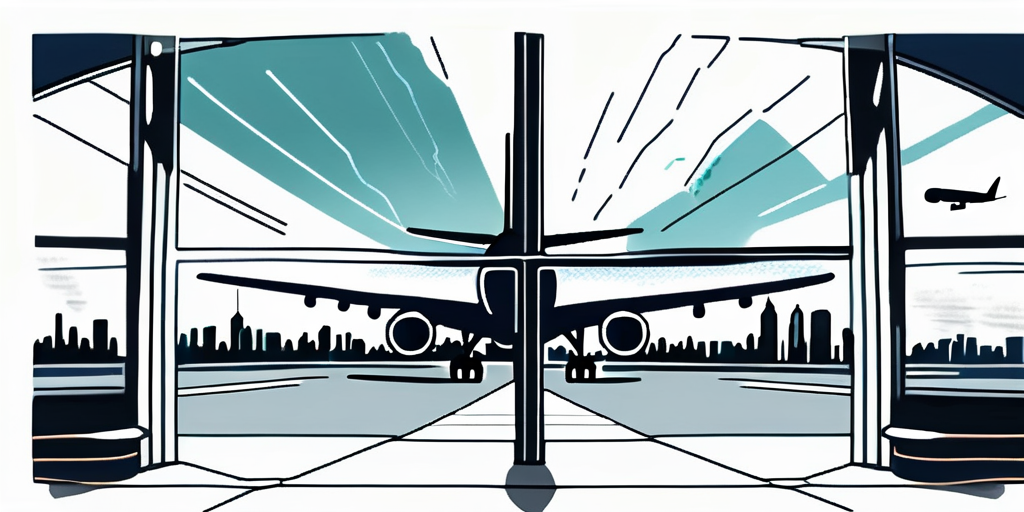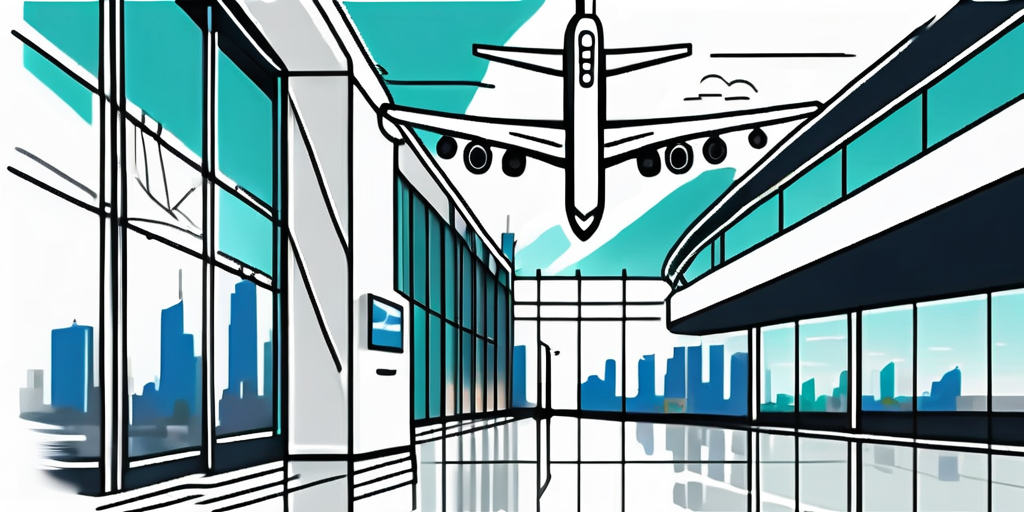Can You Leave the Airport During a Connecting Flight?
Get guidelines on leaving the airport during a connecting flight. Discover rules, restrictions, and tips for making the most of your layover.
If you've ever found yourself with a long layover between flights, you may have wondered if it's possible to leave the airport and explore the city or town you find yourself in. In this article, we will delve into the topic of leaving the airport during a connecting flight. We'll help you understand the concept of connecting flights, explore the factors that influence your ability to leave the airport, and discuss the potential risks and consequences. Additionally, we'll provide you with some helpful tips for leaving the airport during a layover, ensuring you make the most of your time while still making it to your next flight on time.
Understanding Connecting Flights
A connecting flight refers to a journey that involves multiple flights to reach your final destination. Instead of taking a direct flight, you have a layover at an intermediate airport. During this layover, you may have the option of leaving the airport to explore the city or town where the airport is located.

What is a Connecting Flight?
In simple terms, a connecting flight is a part of your overall itinerary that involves changing planes at a connecting point. It allows you to reach your destination even if there isn't a direct flight available.
How Long are Typical Layovers?
The duration of layovers can vary significantly. Some layovers may only last 30 minutes, while others can extend to several hours or even overnight stays. The length of your layover will play a crucial role in determining whether you can leave the airport or not.
When it comes to layovers, there are a few factors to consider. Firstly, the airline you are flying with and the specific route you are taking can influence the length of your layover. Some airlines intentionally schedule shorter layovers to minimize travel time, while others may offer longer layovers to allow passengers to explore the connecting city.
Another factor to keep in mind is the airport itself. Some airports are known for their efficiency and seamless connections, making shorter layovers more feasible. On the other hand, larger airports with multiple terminals or complex layouts may require more time to navigate, resulting in longer layovers.
Additionally, the time of day can also impact the duration of your layover. If you have an early morning or late-night layover, you may find limited services and facilities available at the airport. In contrast, a midday layover may offer more options for dining, shopping, or even taking a quick city tour.
It's important to note that while longer layovers may provide an opportunity to explore the connecting city, they can also be tiring, especially if you have been traveling for an extended period. It's essential to consider your energy levels, travel fatigue, and personal preferences before deciding whether to venture out of the airport during a layover.
Factors Influencing Your Ability to Leave the Airport
While the length of your layover is an essential factor, other aspects can influence your ability to leave the airport. Let's take a look at some of these factors:

Length of Your Layover
As mentioned earlier, the length of your layover determines how much time you have available outside the airport. If you have a short layover, it may not be feasible to leave the airport as you could risk missing your next flight. However, if you have a longer layover, you may have enough time to venture out and explore.
Airport Location and Surroundings
The location and surroundings of the airport also play a role in determining whether you can leave during a layover. If the airport is located in a remote area, far from the city center or major attractions, it may be challenging to explore the surroundings within the limited time you have.
However, some airports are strategically located near popular tourist destinations, making it easier for passengers to step out and experience the local culture. For example, if you have a layover in Singapore's Changi Airport, you'll find yourself in close proximity to the vibrant city-state's attractions such as Gardens by the Bay, Marina Bay Sands, and Sentosa Island. With efficient transportation options and well-connected infrastructure, you can make the most of your layover and create unforgettable memories.
Airline Policies
Each airline has its policies regarding leaving the airport during a layover. Some airlines may allow passengers to leave the airport freely, while others may require specific documentation or have restrictions in place. It's crucial to familiarize yourself with the airline's policies before making any plans.
For instance, certain airlines may require passengers to obtain a transit visa if they wish to leave the airport during their layover. This is particularly common in countries where transit passengers are required to go through immigration and customs. It's important to check the visa requirements and regulations of the country you'll be visiting, as well as the specific policies of your airline, to ensure a smooth and hassle-free layover experience.
Potential Risks and Consequences
While leaving the airport during a layover can be an enticing prospect, it's essential to consider the potential risks and consequences involved:
Missing Your Next Flight
One of the significant risks of leaving the airport is the possibility of missing your connecting flight. If you encounter traffic, delays, or any unforeseen circumstances outside the airport, you may not make it back in time for your next flight. This can lead to significant disruptions to your travel plans.
Going Through Security Again
When you leave the airport during a layover, you'll need to go through security again upon your return. This can be time-consuming and may add unnecessary stress to your journey. Additionally, the security procedures at different airports may vary, further impacting your travel experience.
Dealing with Unforeseen Circumstances
While it's impossible to predict every eventuality, leaving the airport during a layover means you may encounter unforeseen circumstances. These can include traffic congestion, weather conditions, or any unexpected emergencies that may prevent you from returning to the airport on time.
Let's delve deeper into the potential risks and consequences of leaving the airport during a layover. One risk that travelers often overlook is the possibility of getting lost in an unfamiliar city. Navigating through unknown streets and public transportation systems can be challenging, especially if you're not familiar with the local language or customs. This can lead to wasted time and added stress, further jeopardizing your chances of making it back to the airport in time.
Another consequence to consider is the financial aspect. Leaving the airport during a layover may tempt you to explore the local attractions or indulge in shopping sprees. While this can be a delightful experience, it's important to remember that it can also strain your budget. Unexpected expenses, such as transportation costs, entrance fees, and dining expenses, can quickly add up and leave you with less money for the rest of your trip.
Tips for Leaving the Airport During a Layover
If you're determined to leave the airport during a layover and explore your surroundings, here are some valuable tips to keep in mind:

Researching the Destination in Advance
Prior to your trip, conduct thorough research about the destination where you have your layover. Identify popular attractions nearby, transportation options from the airport, and estimated travel times. This information will enable you to make informed decisions and maximize your time outside the airport.
For example, if you have a layover in Amsterdam, you might discover that the city's famous canals are just a short train ride away from the airport. Armed with this knowledge, you can plan your itinerary accordingly and ensure you don't miss out on the chance to experience the beauty of the city's waterways.
Packing Essentials for a Short Excursion
When leaving the airport, it's essential to pack only the essentials for your short excursion. Carrying minimal luggage will make it easier to navigate through busy streets, public transportation, and tourist sites. Consider bringing a small backpack or daypack to carry your belongings.
Imagine you have a layover in Tokyo, Japan. You might decide to visit the bustling Shibuya Crossing, known as one of the busiest intersections in the world. With a compact backpack, you can easily maneuver through the crowds and capture stunning photos of this iconic location without feeling weighed down by excessive baggage.
Keeping Track of Time
While exploring the city during your layover, it's crucial to keep a close eye on the time and plan your return to the airport accordingly. Set reminders and alarms to ensure you don't lose track of time and risk missing your next flight.
Let's say you have a layover in Dubai, United Arab Emirates. You decide to visit the magnificent Burj Khalifa, the tallest building in the world. As you marvel at the breathtaking views from the observation deck, you make sure to set an alarm on your phone to remind you when it's time to head back to the airport. After all, you wouldn't want to miss your flight while being captivated by the stunning skyline of Dubai.
In conclusion, the ability to leave the airport during a connecting flight depends on various factors, such as the length of your layover, airport location, and airline policies. It's important to weigh the potential risks and consequences before making any plans. However, if you do decide to venture out, be sure to research your destination in advance, pack wisely, and keep track of time. By following these tips, you can make the most of your time during a layover and enhance your travel experience.
Ensure Your Rights with ClaimCompass
If your travel plans are disrupted by a delay, cancellation, or overbooking, remember that ClaimCompass is here to support your air passenger rights. You could be entitled to up to 600€ in compensation, and we're committed to making the claim process hassle-free for you. Our expertise in EU Regulation 261/2004 allows us to evaluate your situation accurately and fight for the compensation you deserve. Don't let a disrupted flight ruin your experience; let us handle the claim for you. Check your eligibility for free and submit a claim today – remember, there's no cost to you unless we succeed!
